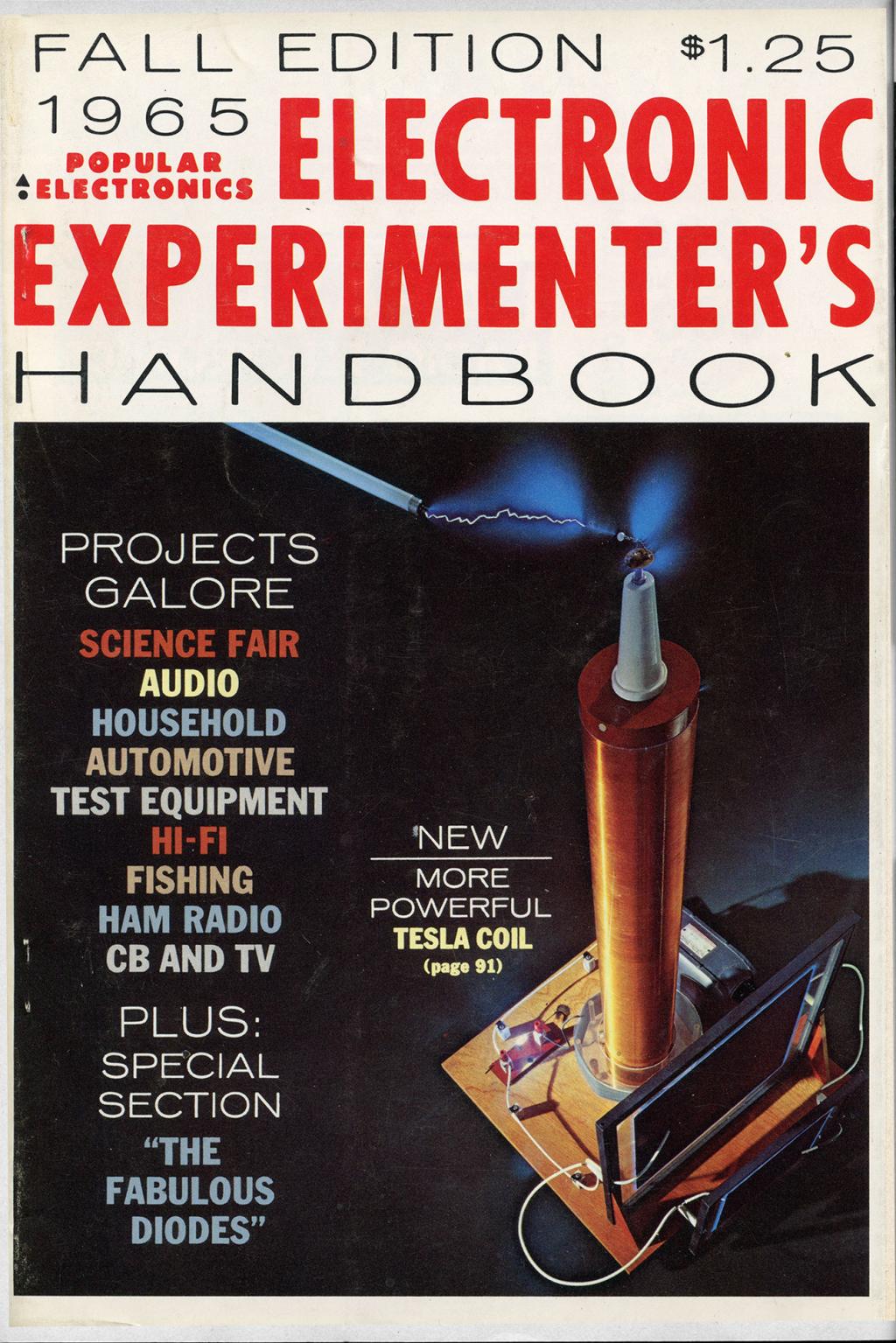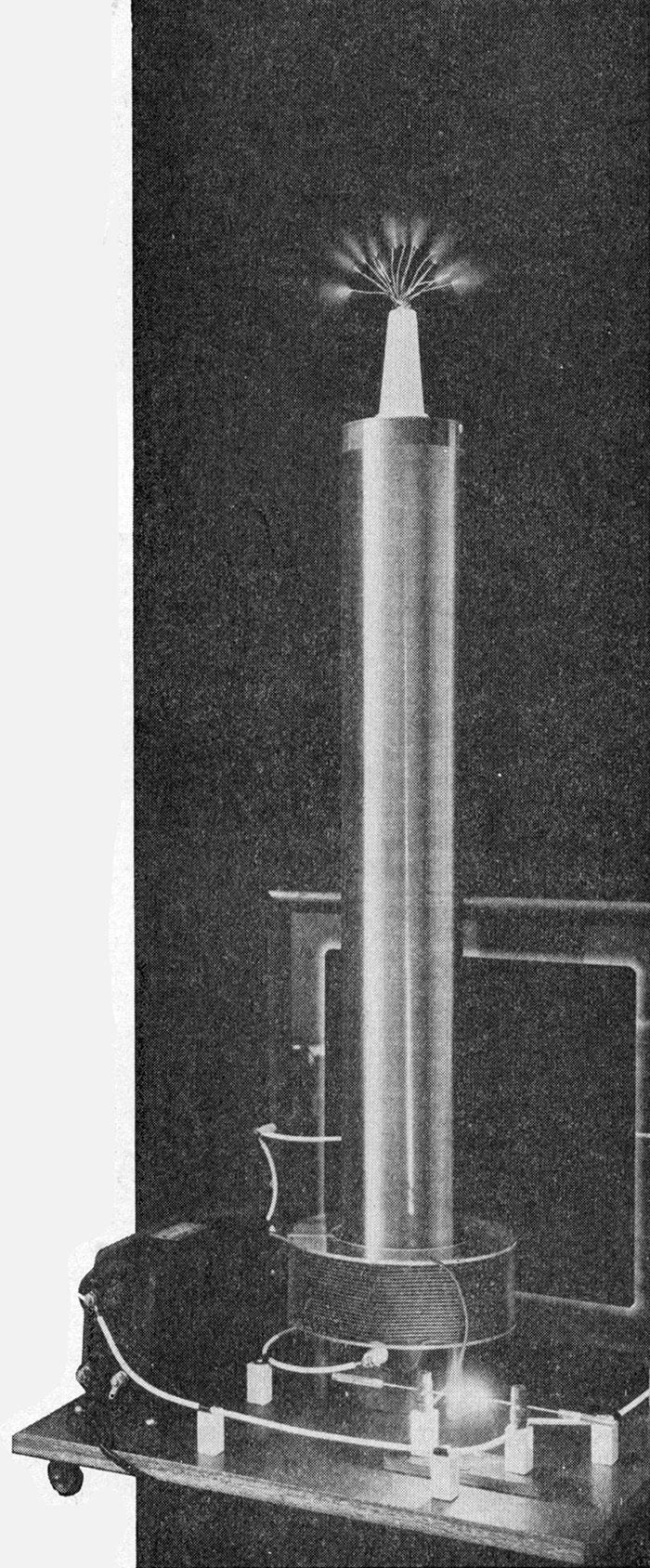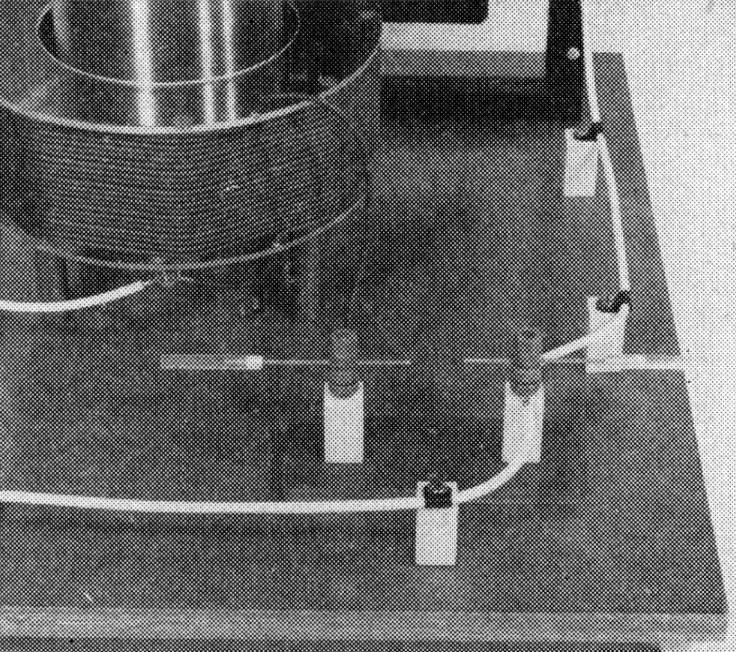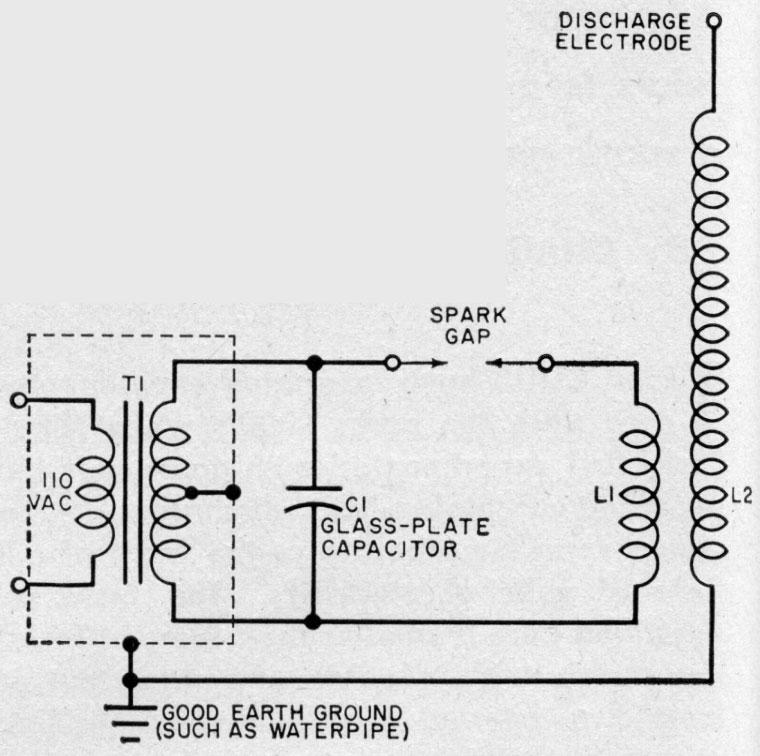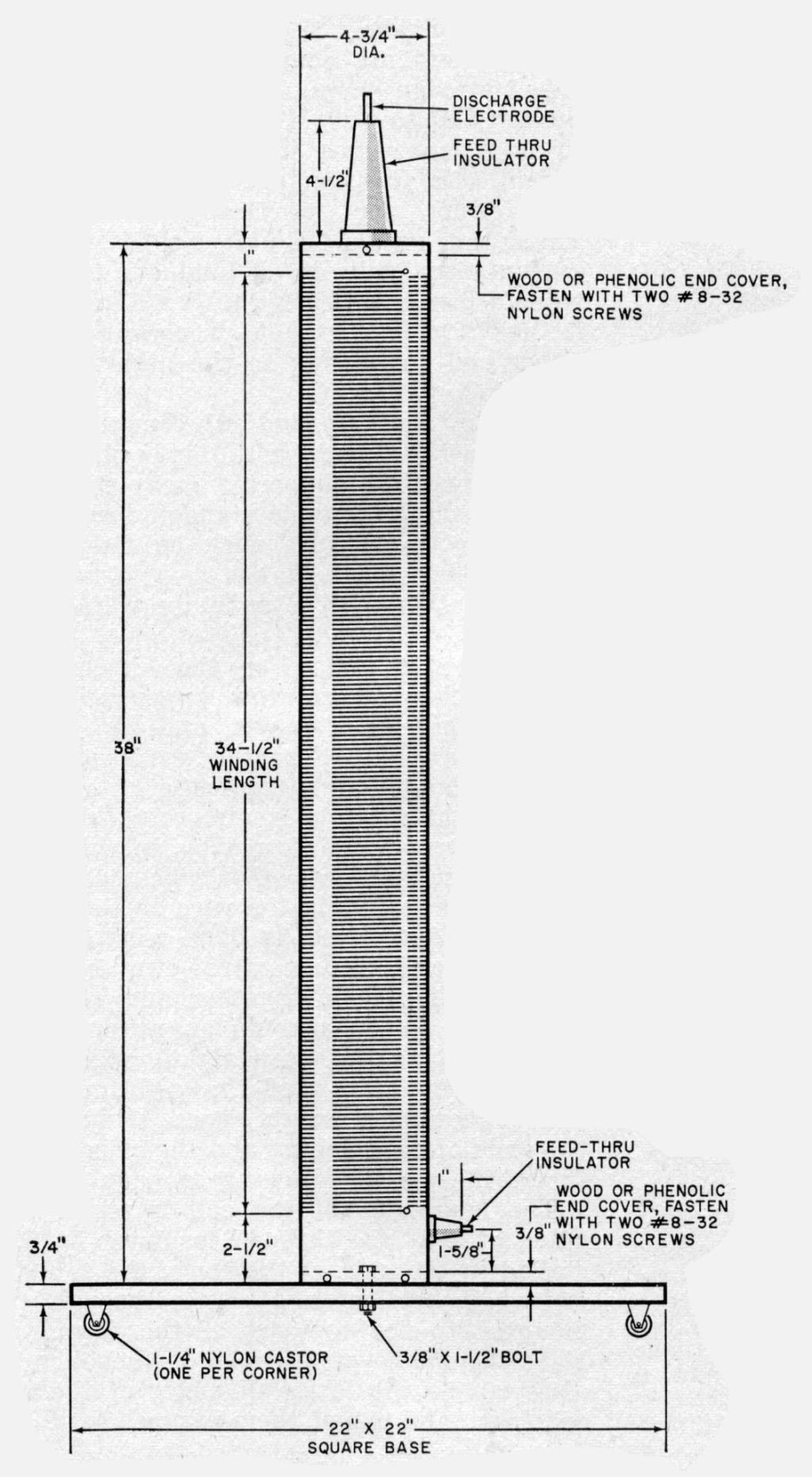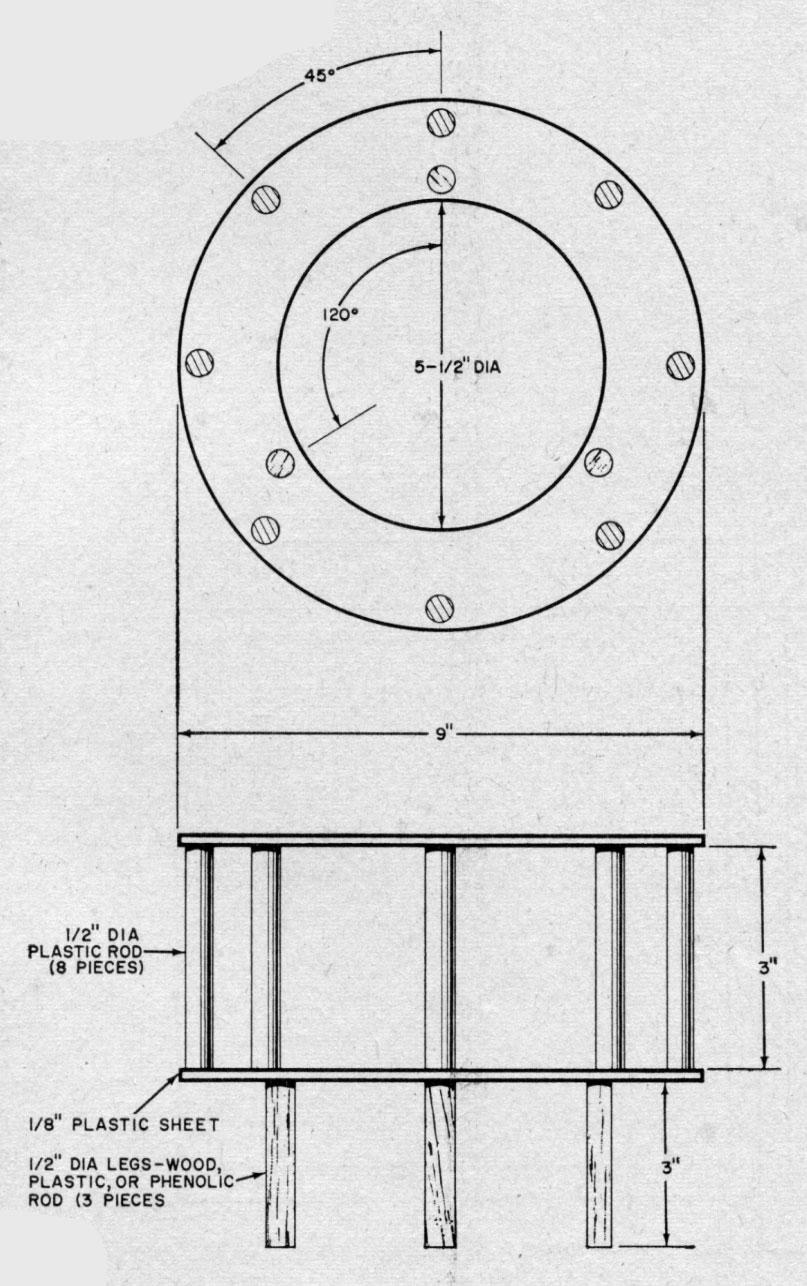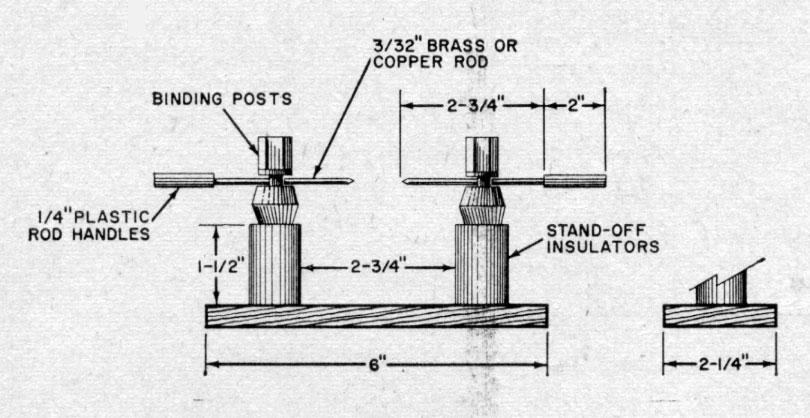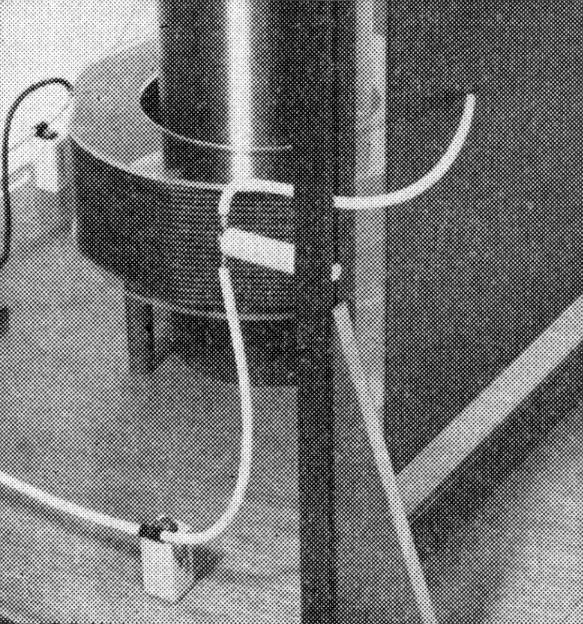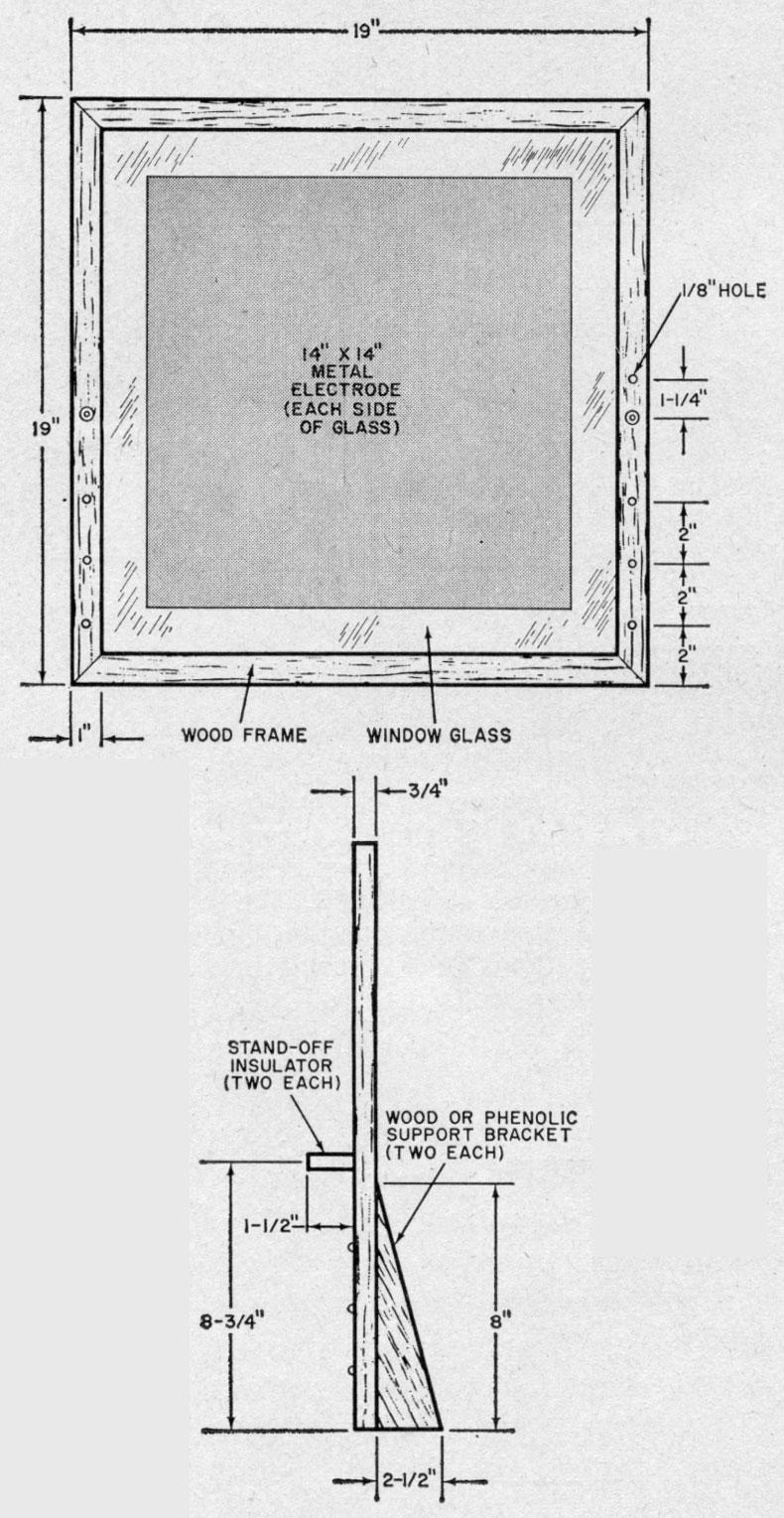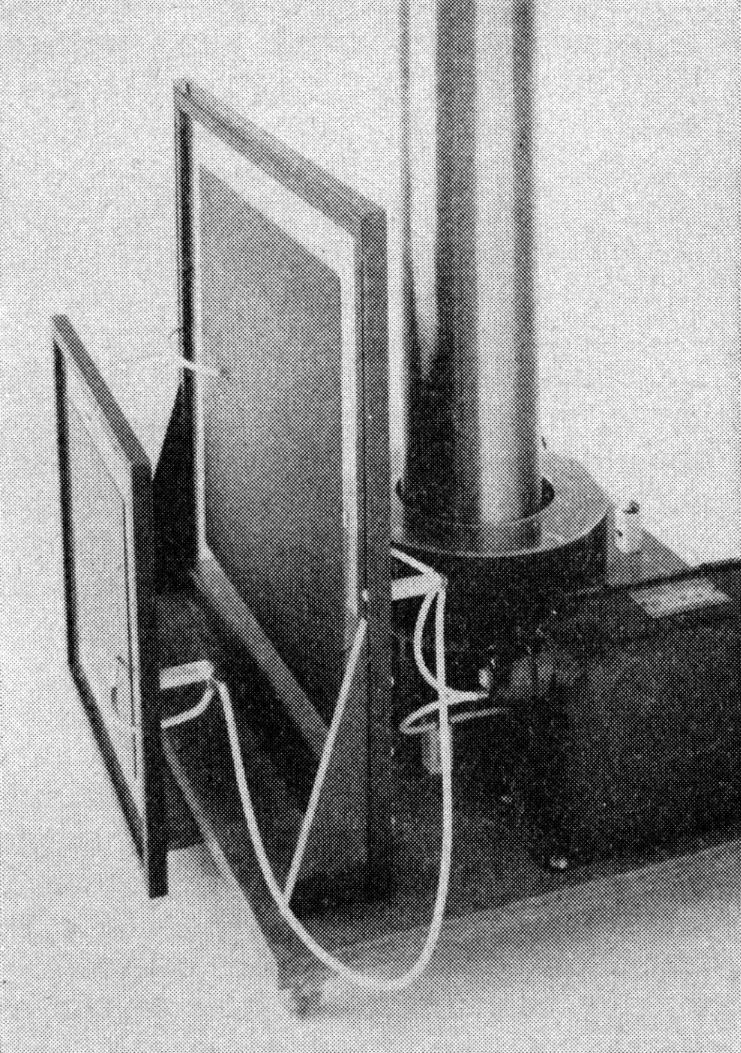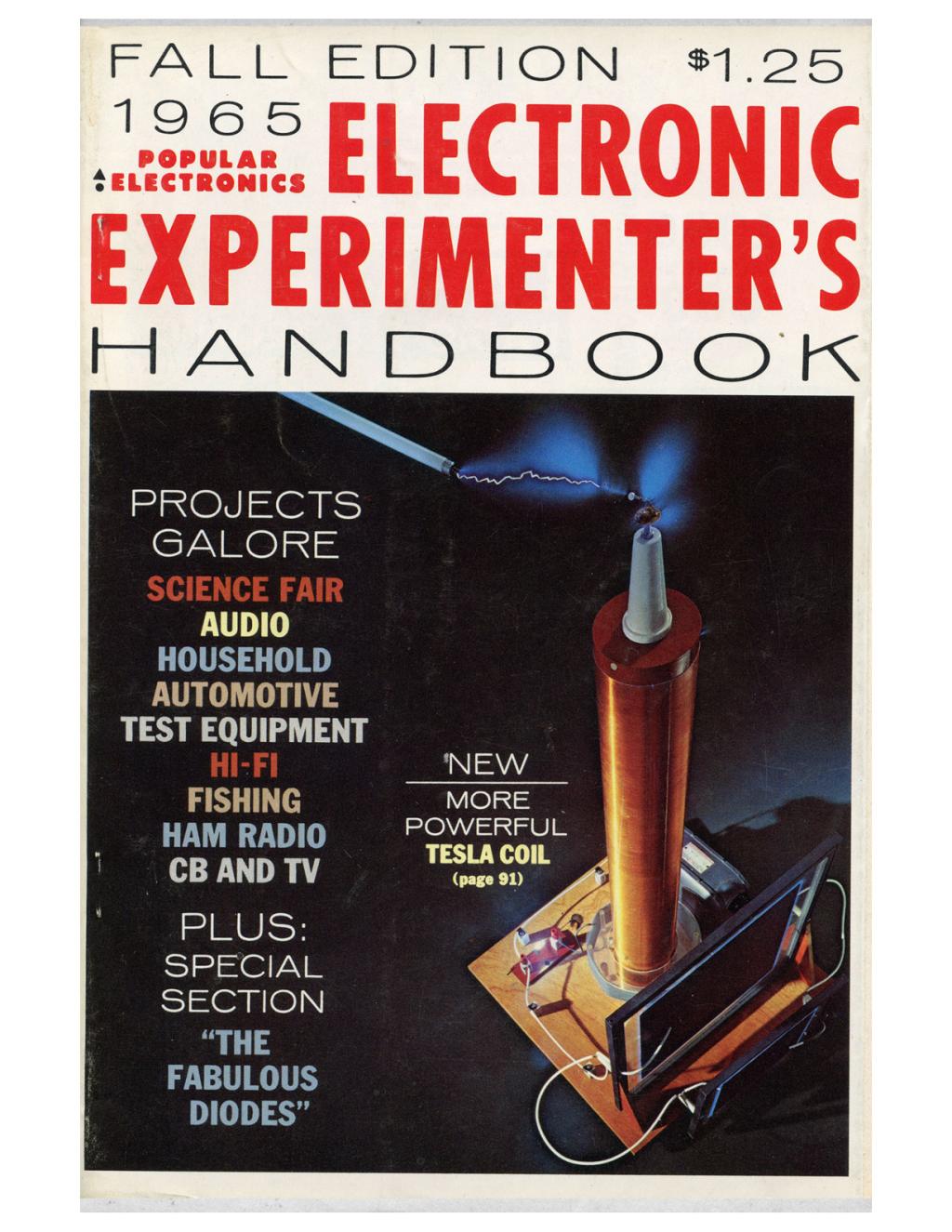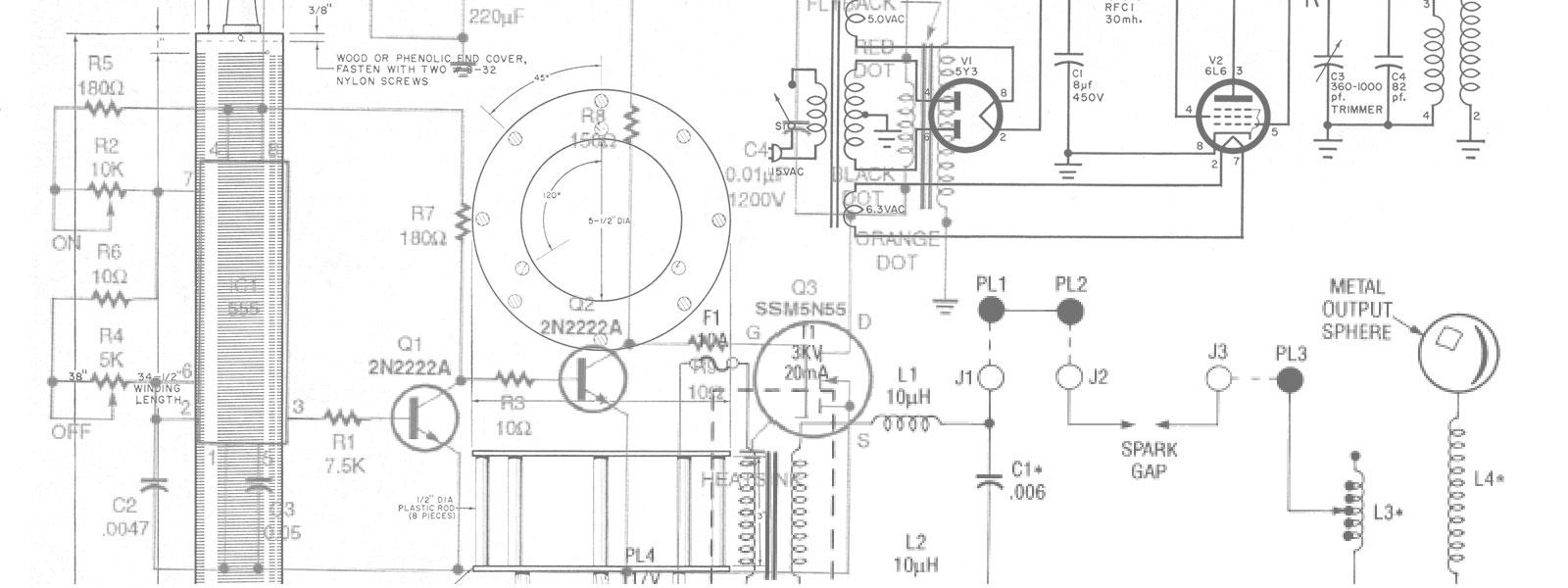
Plans
Big TC
A quarter of a million volts? All it takes is a transformer, a capacitor, a spark gap, and Tesla's famous coil
TESLA COILS have fascinated experimenters ever since the early 1900's when Nikola Tesla first experimented with giant coils that produced lightning-like discharges which would span his laboratory — the work of millions of volts of electricity. The Tesla coil described here is smaller than some of Tesla's designs, but it's capable of putting out almost a quarter of a million volts! Brilliant corona discharges as long as a foot or more provide a spectacular display of its intense electrical field, and neon and fluorescent lamps can be excited as far as five feet away.
Intended both as a dynamic demonstrator of electrical principles and as a crowd-attracting science fair project, “Big TC” can be put together for about $30. However, if a used transformer from a neon sign shop can be secured reasonably, the cost will be even less.
WARNING: The voltages used in this project are highly dangerous. Inexperienced persons should seek aid from an instructor or other expert before building it.
As shown in the schematic diagram above, T1 steps the household line voltage up to 12,000 volts. The transformer is the type commonly used to operate neon signs. A high-voltage glass-plate capacitor, C1, is connected directly across the high-voltage secondary winding of T1. The capacitor serves as an energy storage device, charging up to T1's secondary voltage and then discharging in response to the 60-cycle a.c. voltage.
Discharging of C1 is through the spark gap into coil L1. Each time the spark gap “fires,” a high current flows through L1. The larger capacitor C1 is made, the larger will be the current through L1. Discharges across the spark gap produce extremely jagged pulses of power which are very rich in r.f. harmonics. The energy — due to the values of the components used — is greatest in roughly the 100-kc. region.
Windings L1 and L2 form a air-core step-up transformer, with L1 the primary and L2 the high-voltage secondary. The voltage at L2 will be 75,000 to 250,000 volts depending on the size of C1.
Design and Layout. The prototype of “Big TC” was built on a plywood base measuring 3/4" x 22" x 22", although a larger base would be desirable for high-voltage units to prevent arcing between L2 and T1 and C1. Mount L2 in the center of the base and T1 and C1 as close to the edges as possible; if you plan to operate the unit at voltages exceeding 100,000 volts, make the base 3' x 3' for even greater separation between components.
Power transformer T1 is the only high-cost component. A neon-sign unit rated at 12,000 volts a.c. at 30 ma., it sells for about $40 new, but used transformers are constantly being salvaged by sign shops, and can be picked up for $10 to $20. It is also possible to find neon signs in junk yards, in which case you can probably buy the transformer for practically nothing. The author used a GE unit, No. 51G473, known technically as a “luminous tube transformer.” Measuring 9 1/2" x 6" X 4", it has 2" feedthrough insulators at either end connecting to the high-voltage winding.
Primary coil L1 and all connecting leads must be made with high-voltage wire, preferably supported away from the base on 1" ceramic standoff insulators. Test prod wire such as Belden Type 8899 is ideal — it has flexible rubber insulation with a puncture voltage rating of 20,000 volts.
Winding the Coil. For the big coil (L2) a phenolic coil form* measuring 4 3/4" in outside diameter and 38" in length was used. Alternately, cardboard, wood or other insulating materials can be substituted. You can improve these latter types of coil forms by spraying on at least six coats of acrylic plastic spray before winding the wire on them.
The winding itself is done with No. 26 Formvar-insulated wire — two 1-lb. spools (splice them together and keep the solder joint as small as possible) will give you a 2000-turn, tightly spaced coil covering 34 1/2" of the coil form. There should be extra space between the ends of the winding and the ends of the form — see the drawing on page 95.
The lower end of the coil is terminated at a 1" feed through insulator installed in the side of the form, the top end of the coil at a 4 1/2" feedthrough mounted to the top end of the form. Make the end covers of wood or phenolic discs cut to the inside diameter of the coil form, and mount them in place with nylon screws (metal screws at the top end would produce corona discharges which could burn the coil form). Alternatively, the top coil cover can be cemented in place with epoxy cement if a sturdy coil form is used. The coil is attached to the base with a 3/8" bolt.
Winding the coil is not nearly as difficult as it appears — the author completed the task in about two hours. Spray the entire winding with acrylic plastic for added insulation, moisture protection, and to keep the windings in place. You can't overdo this step — the author used the contents of an entire aerosol spray can on the prototype, applying one thin layer at a time and letting it dry before adding another.
Building the Primary. As shown on page 93, the form for L1 was made with polystyrene rods and sheeting. While the plastic has excellent insulating qualities and looks attractive, wood or even cardboard can be substituted. If plastic is used, it can be strongly “welded” together with acetone. Regardless of the material used, the form should have an outside diameter of at least 9" to avoid arc-over between L1 and L2. The coil itself (L1) consists of 20 turns of heavy test prod wire.
Spark Gap. The spark gap is simply two ordinary binding posts mounted on stand-off insulators. In turn, these are mounted on a phenolic base measuring 3/8" x 2 1/4" x 6". The electrodes are brass and copper rods with a gap on the order of 1" between them. This distance will vary slightly, depending on the size of capacitor C1.
Fabricating the Capacitor. The capacitor consists of two 14" x 14" sheets of tin cemented to a 18 1/2"-square piece of window glass. Although aluminum foil can be used for the capacitor plates, tin was obtained from a sheet metal shop for this purpose so that connecting leads could be soldered directly to it. If you use aluminum foil, a fairly good connection can be had by making leads of 1/2"-wide aluminum foil strips and taping them down to the electrodes.
Glass is an excellent dielectric material for this application since it has an extremely high puncture voltage and a high dielectric constant. As you will note in the drawing on page 94, a border of glass is left around the capacitor plates — this should be at least 1 1/2" wide. The calculated capacity of C1 is approximately 0.0027 µf.
Testing and Operation. Caution! Adjustments to the Tesla coil, and specifically to the spark gap, should be made only when the unit is off. Although the output voltage of the Tesla coil may be on the order of 150,000 volts, the current capacity is only hundreds of microamps. This current can inflict a nasty shock and r.f. burns, however.
Use EXTREME CAUTION around the neon sign transformer. It delivers 12,000 volts at 30 ma., and this voltage could be lethal under certain conditions. Again, be sure the plug is out when you make adjustments.
To adjust the spark gap, first open it to about 1 1/2"; it will not fire at this point. Gradually move the electrodes together — unplugging the unit each time you adjust the gap — until the point is reached where the gap “fires.”
The author's original version of “Big TC” produced an output voltage of about 100,000 volts with the single plate glass capacitor described above. To increase the output of “Big TC,” it is only necessary to increase the capacity across the primary by adding one or more plate glass capacitors in parallel with C1. With two capacitors (both the same size as detailed on page 94), the author's prototype produced over 150,000 volts output; and with three capacitors in parallel, the output exceeded 200,000 volts. However, at such high voltage there was a tendency for insulation breakdown between coil L2 and capacitor C1. This breakdown could have been overcome by making the mounting base larger and increasing the spacing between components.
The author's Mark II version of “Big TC” compromised by adding a second capacitor with half the plate area of C1. Except for size, this new capacitor was fabricated in exactly the same way and had a measured capacitance of 0.0014 µf. The new capacitor was attached to the base board with a 6" x 9" piece of 3/8"-thick phenolic board. Four retaining screws held the board to the underside of the base board and four more screws affixed the phenolic to the wooden frame of the outboard capacitor. With this second capacitor (see cover photograph), the voltage output was estimated to be in the neighborhood of 130,000 volts.
The output of your Tesla coil can be estimated by drawing an arc to a metallic object attached to a long wooden handle. Slowly increase the distance between the object and the discharge terminal until the arcing stops: a 6" arc represents 100,000 volts, a 14" arc about 200,000 volts, and a 21" arc some 300,000 volts. More amazing than figures, however, are the brilliant, spectacular phenomena exhibited by high-voltage, high-frequency electricity.
